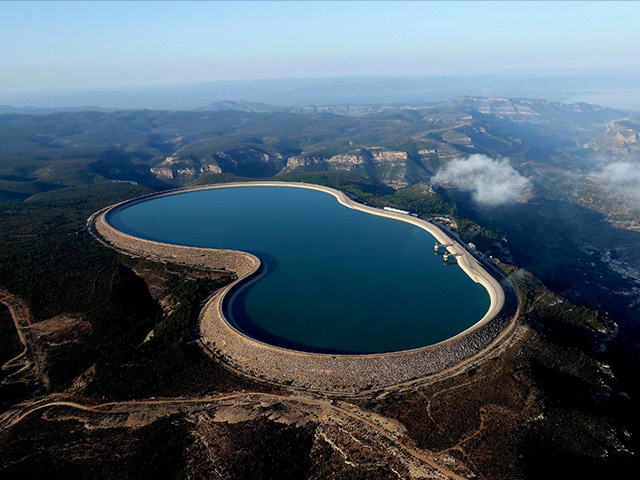
A massive hydro-power station in the Highlands could be doubled in size, with the promise of 1,000 construction jobs and enough electricity to power 900,000 homes.
Scottish Power announced yesterday that it is to examine increasing the capacity of the Ben Cruachan pump-storage station near Oban from 440 megawatts of electricity to 1,040MW in a scheme costing up to £350million.
The project, if approved following a two-year feasibility study, would take between eight and 10 years to complete and create hundreds of jobs.
Scottish Power, owned by Spanish energy giant Iberdrola, believes it is possible to build a new cavern inside Ben Cruachan and expand the reservoir to create more capacity.
It plans to use excess energy generated from windfarms at off-peak periods to pump water from a lower reservoir to an upper reservoir, from which water will cascade back down to drive huge generators. First Minister Alex Salmond was in Spain for the major announcement and said Scotland could be on the verge of a “new generation of hydro power to rival the revolution in the glens in the 1950s”.
Iberdrola chairman Ignacio Galan unveiled the project in a vast cavern inside a mountain similar to Ben Cruachan, about 30 miles from Valencia.
He said: “We see a new generation of pump-storage hydro as being a major asset for electricity systems worldwide as more renewable electricity continues to come on stream.
“As well as being able to further support peak demand, expanded pump storage would be able to effectively store greater levels of electricity at times when renewable energy output is high but demand is low.”
Mr Salmond said: “Combined with other planned developments around Scotland, this major announcement heralds a renaissance in hydro and pump-storage energy and opens another chapter in our outstanding history of harnessing renewables.
“In 1945, fewer than half of the homes in the Highlands had access to electricity. By 1959, that proportion had increased to over 90% through the forethought and leadership of Tom Johnston, who led the hydro-electric revolution.”
Mr Salmond and Mr Galan went by helicopter to the cave housing the hydro plant. The first minister claimed the scheme – and 20 others that have been licensed since 2007 – could see hydro power contribute up to a third of Scotland’s generating capacity within 10 years.
Mr Salmond, MSP for Aberdeenshire East, said: “The plans for future pump-storage development demonstrate that our significant and diverse range of natural assets continue to attract the huge investment in infrastructure that will enable the Scottish economy to flourish.
“Increasing capacity will strengthen Scotland’s balanced energy mix and, in doing so, can also enhance security of supply right across Great Britain.”
Mr Salmond said Scotland’s role as an exporter of electricity was becoming increasingly important as the gap between capacity and peak demand in England narrowed.
He said: “It is clean, green, renewable Scottish electricity that will keep the lights on.”
Mr Salmond said any planning application would be considered on its own merits but wished Scottish Power well with its feasibility study.
“This is an exciting day because it points to a vision of harnessing Scotland’s natural resources,” he added.
Mr Galan said he was optimistic that the feasibility study would lead to the submission of a planning application.
It emerged that Mr Salmond, who is holding talks with renewables firm Gamesa in Bilbao, Spain, today, asked Iberdrola to examine the case for expanding the Highland hydro plant.
It would take eight to 10 years to complete
Recommended for you
